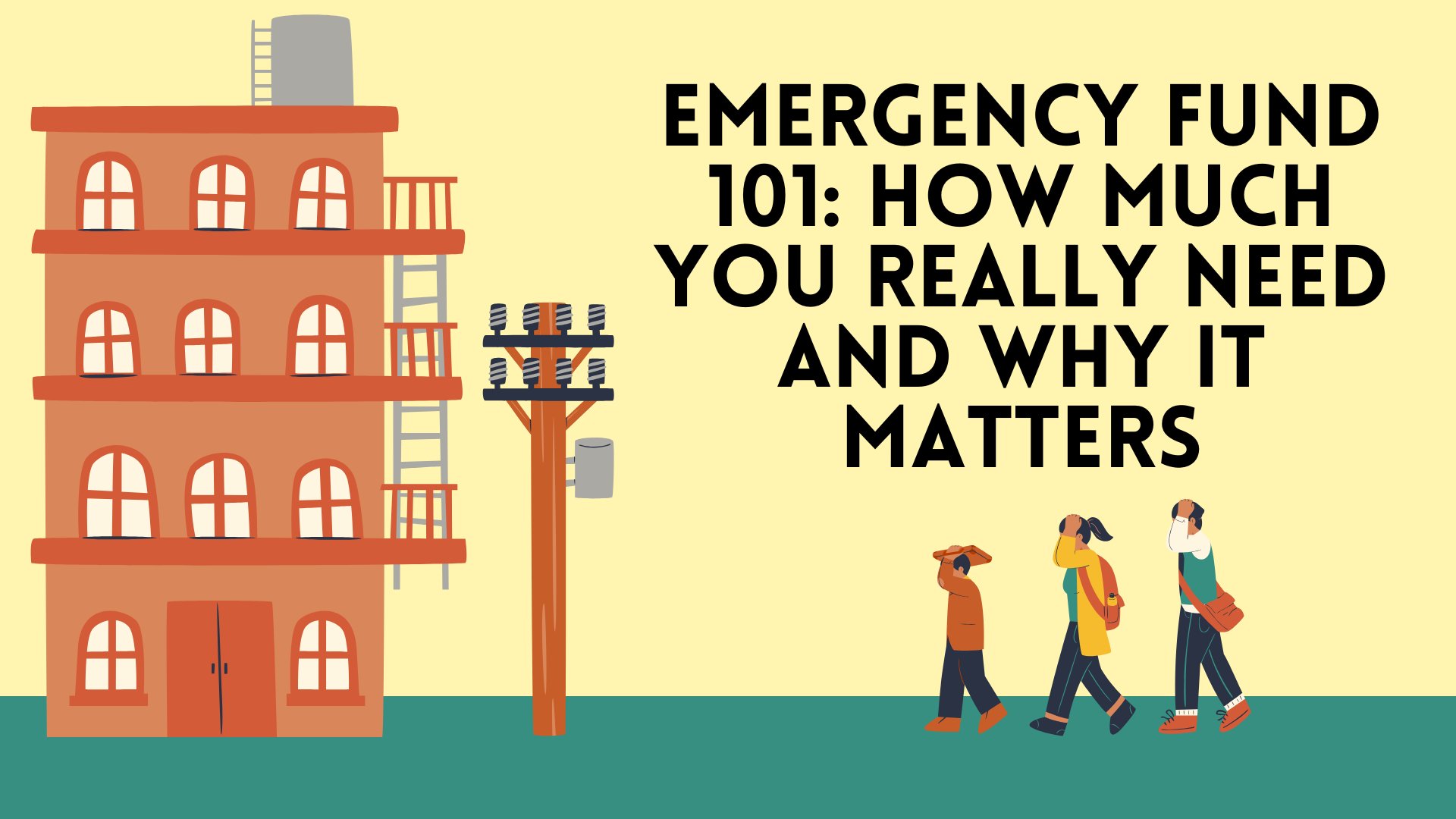Introduction: Your Financial Safety Net Starts Here
Life is unpredictable—whether it’s a sudden job loss, car repair, or medical bill, emergencies can hit hard and fast. Without a financial cushion, even minor setbacks can lead to major debt. That’s where an emergency fund comes in.
Building a dedicated reserve of money for unexpected expenses is one of the most important steps toward financial stability. This guide to Emergency Fund 101 will help you understand how much you really need, where to keep it, and why starting now can protect your future.
1. What Is an Emergency Fund?
An emergency fund is a savings account specifically set aside for unplanned, urgent expenses. It’s not for vacations, new gadgets, or dining out—it’s your backup when life throws a financial curveball.
Common uses include:
-
Job loss or reduced income
-
Emergency medical expenses
-
Urgent home or car repairs
-
Family crises or travel for emergencies
Purpose: To avoid dipping into credit cards, loans, or retirement savings during unexpected events.
2. Why an Emergency Fund Is Essential
Even financially responsible people face emergencies. Without a fund, you may have to:
-
Rely on high-interest debt
-
Delay essential expenses
-
Drain your long-term savings
Statistic: A Federal Reserve study found that over 30% of adults in the U.S. couldn’t cover a $400 emergency without borrowing or selling something.
Takeaway: An emergency fund gives you peace of mind and financial independence when it matters most.
3. How Much Do You Really Need?
The ideal emergency fund size depends on your monthly expenses, lifestyle, and risk tolerance.
General Guidelines:
-
Minimum: $1,000 – great for beginners
-
Basic Coverage: 3 months of essential expenses
-
Optimal Coverage: 6 months (especially for freelancers or those with irregular income)
Example Calculation:
If your monthly essentials (rent, groceries, insurance, utilities) cost $2,500:
-
3-month fund = $7,500
-
6-month fund = $15,000
Tip: Start with a small goal and build it gradually.
4. What Counts as Essential Expenses?
When calculating your emergency fund needs, focus only on non-negotiable living costs, such as:
-
Rent or mortgage
-
Utilities (electricity, water, internet)
-
Groceries and basic household needs
-
Transportation (gas, car payments, transit)
-
Insurance premiums
-
Minimum debt payments
Don’t include: subscriptions, dining out, vacations, or entertainment.
5. Where Should You Keep Your Emergency Fund?
Your fund should be safe, accessible, and separate from daily spending money.
Best options:
-
High-yield savings accounts: Earn interest while keeping money liquid
-
Money market accounts: Slightly higher returns, still very accessible
-
Certificates of Deposit (CDs): Use short-term CDs if you already have a basic cushion
Avoid: Stock investments or long-term retirement accounts. Market volatility makes them risky for emergencies.
6. How to Build Your Emergency Fund (Even on a Tight Budget)
You don’t need a huge income to start saving. Use these strategies:
-
Automate savings: Set up automatic transfers from checking to savings
-
Round up transactions: Use apps that round purchases and save the difference
-
Use windfalls: Tax refunds, bonuses, or gifts can jumpstart your fund
-
Cut small costs: Skip one restaurant meal a week and redirect the money
Tip: Make your first milestone $500 or $1,000—it’s a strong psychological win.
7. When Should You Use Your Emergency Fund?
It’s called an emergency fund for a reason—not for wants, but true needs.
Use your fund when:
-
You lose your job
-
You face unexpected medical or dental bills
-
Your car or home needs urgent repair
-
You’re dealing with family or legal crises
Discipline is key: Don’t use the fund for planned expenses or short-term wants.
8. How to Rebuild After Using It
If you dip into your emergency fund, make a plan to replenish it as soon as possible.
-
Pause non-essential spending
-
Increase savings temporarily
-
Use a portion of your next bonus or refund to rebuild
-
Treat the fund like a bill: pay into it monthly
Takeaway: It’s okay to use your emergency fund—but make refilling it a top priority.
9. Emergency Fund vs. Other Savings Goals
It’s important to separate your emergency fund from other savings:
| Purpose | Type of Savings | Accessibility |
|---|---|---|
| Emergency expenses | Emergency fund | Immediate |
| Vacation or big purchase | Short-term savings | Flexible |
| Retirement | 401(k)/IRA | Long-term |
| Home down payment | Investment or high-yield savings | Mid-term |
Don’t combine goals—you risk losing funds meant for critical needs.
10. The Long-Term Value of Peace of Mind
Building an emergency fund doesn’t just protect your wallet—it reduces stress and anxiety. Knowing you have a buffer lets you make smarter choices without panic.
-
You can negotiate a job change without fearing missed bills
-
You won’t rack up credit card debt during surprise expenses
-
You’ll sleep better knowing you’re financially prepared
Final Word: Financial freedom starts with financial safety.
Conclusion: Your Emergency Fund Is Your First Line of Defense
No matter your income or stage of life, an emergency fund is an essential part of your financial foundation. It empowers you to handle life’s surprises without derailing your future.
Start small, stay consistent, and remember: Every dollar saved is a step closer to financial security.
